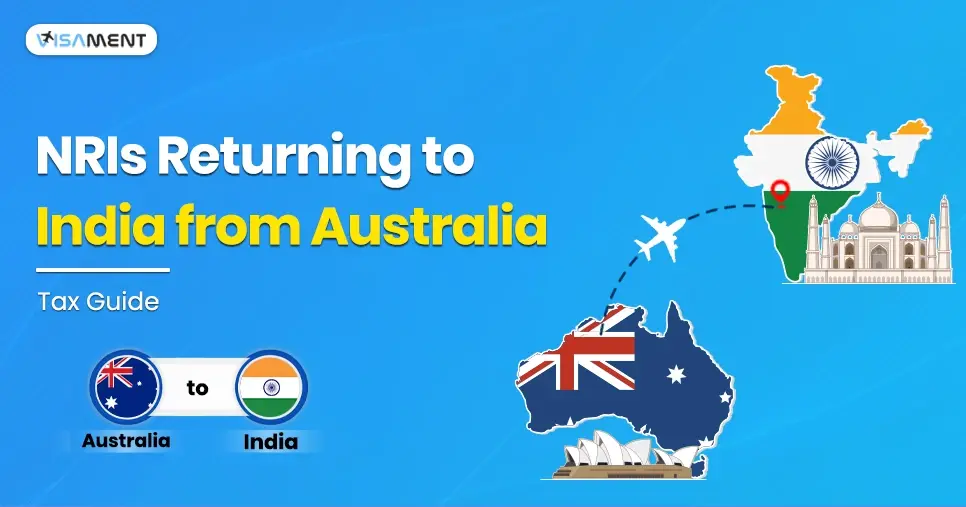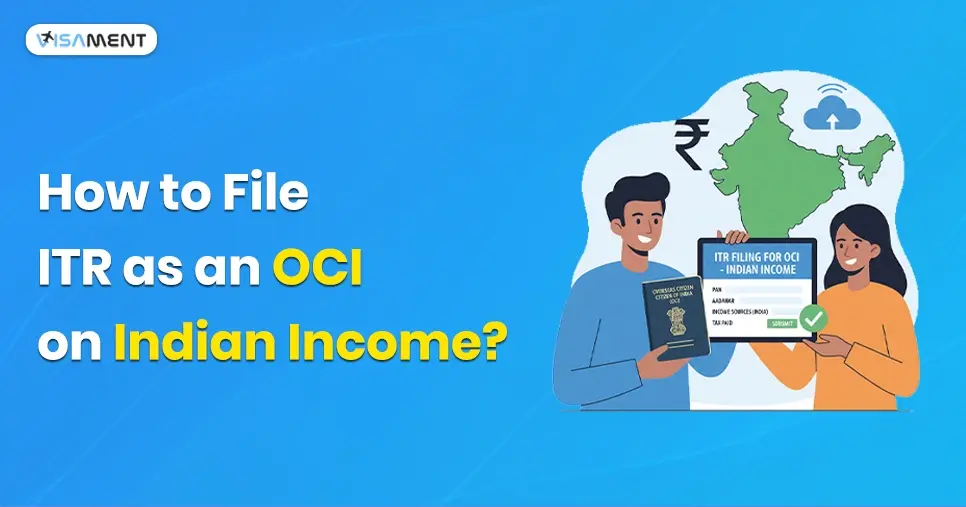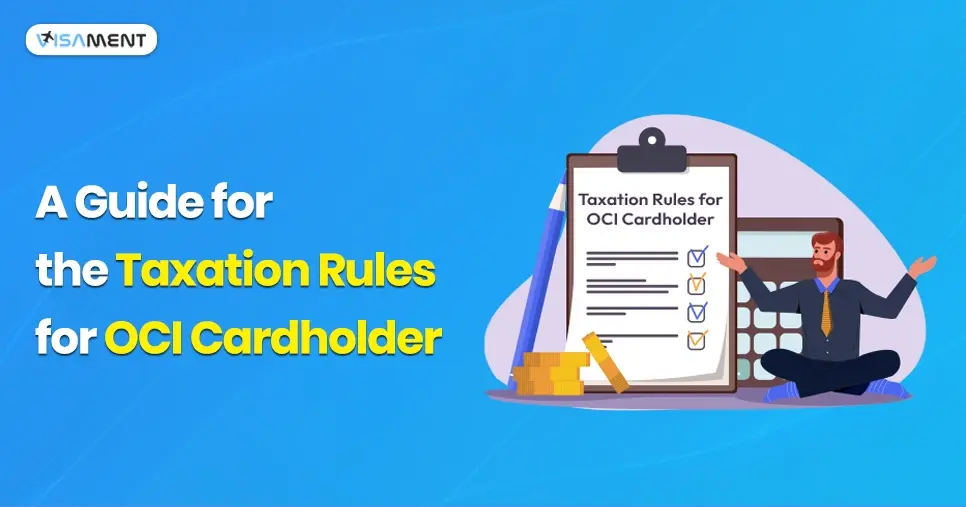- Key Takeaways
- Why do NRIs Return to India from Australia?
- Banking Needs for the NRIs Returning from Australia to India
- Investment Management of an NRI after Returning to India
- Tax Implications for an NRI Returning to India
- DTAA Between India and Australia
- Common Challenges NRIs Face When Returning from Australia
- Final Thoughts
Non-resident Indians (NRIs) returning to India are a significant change for them, which not only affects their lifestyle but also requires them to understand proper tax planning, documentation, Investment, and financial strategies.
There are many reasons for the NRI returning to India from Australia, which can be financial, emotional, or work-related.
In this blog, we will see a planned, structured way for an NRI to move back to India from Australia.
Key Takeaways
- Due to emotional, professional, and financial reasons, an NRI move back to India.
- An NRI needs to review and manage their NRE, NRO, and FCN accounts in India.
- Through the DTAA between Indian and Australia, an NRI can be taxed in one country.
- An NRI's income will be taxed according to their residency status in India.
Why do NRIs Return to India from Australia?
Before starting this blog, let's understand why NRIs return to India from Australia. So here are some of the common reasons for the NRIs, why they move back to India.
- Family Gathering: One of the most common reasons for the NRI to return to India is to meet with their loved ones and raise their children with Indian roots and cultures.
- Smooth lifestyle: India offers an affordable and smooth lifestyle to the NRIs, where they can get all the healthcare, education, and various types of facilities at low cost.
- Growing Economy: India is one of the fastest-growing economies, offering numerous opportunities in the corporate, technology, and startup sectors, which is also a reason many NRIs choose to return to India from Australia.
- Simple Retirement: In India, NRIs can enjoy a simpler retirement with better facilities to make the most of their post-retirement life.
Have questions? Our experts guide you through every step of the Tax Planning for Returning NRI – no confusion, no delays.
Consult an Expert TodayBanking Needs for the NRIs Returning from Australia to India
When an NRI returns to India, they need to manage their Indian accounts, like Non-resident ordinary (NRO), Non-Resident External (NRE), and Foreign Currency Non-resident (FCNR) accounts.
NRI needs to re-designate their NRE/NRO account after moving back to India, or open a residential rupee account in India, or close their accounts as per the Reserve Bank of India (RBI) and Foreign Exchange Management Act (FEMA) regulations.
NRO Account: An NRI needs to convert their NRO account to an Indian residential savings account or close it.
NRE Account: You need to convert your NRE account into a Resident savings account, or you can transfer the funds to a Resident Foreign Currency (RFC) account from your NRE account.
FCNR Accounts: AN NRI can continue to hold their FCNR accounts until Maturity. After maturity, you need to transfer it into an Indian resident savings account, which should be maintained in rupees, or to an RFC Account to keep them in foreign currency.
International Bank Accounts: As per the RBI, you can continue to hold your international bank account in India that you opened while in a foreign country as an NRI. To continue using your international account, you must comply with all applicable laws and regulations in the country.
Investment Management of an NRI after Returning to India
After getting the new resident status in India, NRIs need to manage and review their foreign investments and assets in India, which are taxable.
They need to manage their investments in India, like fixed deposits, Mutual funds, and demat accounts in India.
Mutual Funds: An NRI needs to link their NRI bank account to their residential savings account to access all existing mutual funds after obtaining resident status in India. Along with this, you also need to update your KYC by providing all your bank details, as well as your Foreign Account Tax Compliance Act (FATCA) and Common Reporting Standards (CRS) status.
Demat Account: After returning to India, an NRI needs to convert their foreign demat account into an Indian resident account or close the existing demat account, after obtaining resident status in India, by contacting their broker/DP.
The securities held in your NRO/NRE account will differ from before due to conversion rules, PIS, and SEBI/RBI regulations. Furthermore, you need to complete a new KYC and update your Foreign Account Tax Compliance Act (FATCA) and PIS formalities by contacting your depository.
Fixed Deposits (FD): If you have a fixed deposit in your NRE/NRO accounts in India, and your residency status has been changed to resident, then you will need to convert your FD account to an Indian FD account. Converting your FD account in India will not affect your Indian tax obligations. You will be taxed and will receive the same interest rates as before, at the applicable tax rates.
Foreign Assets Investments: As per the FEMA guidelines, you can continue to hold your foreign investments and assets in India, which you have purchased when you were in a foreign country and as an NRI.
However, to hold your foreign assets and investments, you need to follow all the rules and obligations, and ROR must report all the foreign investments in the Income tax report (RNOR, and NR don't need to file ITR), such as property, securities, and bank deposits. and regularly check for the updated FEMA and RBI guidelines.
Tax Implications for an NRI Returning to India
When an NRI moves back to India, his or her income will be taxed according to their residency status. So will see hw the NRI will be taxed as a Resident of India, or as a Non-resident Indian.
Here are the qualifications of an NRO or ROI If an NRI meets the conditions given below, they will be considered as an resident of India, and if they fail to meet those conditions, they will be termed as a Non-resident Indians.
- If you stay in India for 182 days or more in a financial year, you will be considered a resident of India.
- If you stay in India for more than 60 days in the current financial year or 365 days in the last 4 preceding years.
→If you are an Indian citizen or a person of Indian origin who left India for employment purposes on an Indian ship as a crew member, then the above 60 days will be exchanged for 182 days in a financial year.
→If you are a citizen of India or an Indian origin person whose total Income is more than 15 lakhs INR apart from the foreign income sources, then the above 60 days will be substituted by 120 days in a financial year.
→If you are an Indian-origin person or an Indian citizen, and your total income is less than 15 lakhs INR, excluding all foreign income sources. Then the above 60 days will be substituted by 182 days in a financial year.
→ A deemed resident is not liable to pay any tax in any other foreign country by reason of domicile residence to become a resident in India, if their income is more than 15 lakhs from the Indian income sources according to Section 6(1A).
Once you get the resident of India status, then you will need to determine whether you are a Resident and Ordinarily Resident (RNOR) or Resident and Not Ordinarily Resident (RNOR).
Here are a few conditions that help you to know your RNOR or ROR status. If you meet those conditions, you will be considered an RNOR; if you fail to meet them, you will be considered an ROR.
1. First Condition
- You should be a non-resident for 9 out of 10 previous financial years.
- The number of days in India should be less than 729 days in the past 7 years.
- If you are qualified for a deemed resident.
2. An Indian citizen or an Indian origin visited India during a financial year
- He or she should have an Indian source of income exceeding 15 lakhs in a financial year.
- The number of stays in India should be between 120 and 182 days.
Note: You will be converted from RNOR to ROR after two or three financial years.
See the table given below to check your Taxability
| Particulars | Non-Resident (NR) | RNOR | ROR |
|---|---|---|---|
| Income arises or is deemed to arise in India | Taxable | Taxable | Taxable |
| Income received or considered to be received in India | Taxable | Taxable | Taxable |
| Income arises outside India | Non-taxable | Non-taxable | Taxable |
DTAA Between India and Australia
The Double Taxation Avoidance Agreement helps NRIs to avoid paying double tax on the same income. This agreement was signed on 30 December 1991, and it applies to all types of corporate or personal income sources.
Here are some of the benefits of the DTAA between India and Australia
- DTAA helps NRIs to claim the tax credit for the tax which is paid internationally.
- It also provides legal certainty regarding the taxation of international income.
- Under the DTAA, interest is subject to a maximum rate of 15%; dividends are taxed under Indian domestic law; and royalties are taxed at 15% for residents of other countries.
Common Challenges NRIs Face When Returning from Australia
Here are some challenges faced by NRIs returning to India from Australia.
- Taxation of the global income can be a little confusing.
- Banking and Repatriation delays due to incomplete documentation.
- Not understanding the Investment system in India.
- Paying the tax twice if you haven't applied the DTAA.
Stop worrying about delays. Apply now and get Indian Counsellor Services.
Chat NowFinal Thoughts
Moving back to India after living in Australia can be a complex process that involves documentation, tax planning for NRIs, and managing investments and foreign assets.
All this cannot be done without personalised expert support. For this, you can choose Visament services for NRIs. We provide NRIs with a fully structured system that includes converting bank accounts, managing all your foreign assets and investments, and determining your residency status.
For more information, visit the Visament website and contact the Support team, which is active 24/7, to clear all your queries and doubts.
Note: This guide is intended for general informational purposes only. The views shared here are personal and do not represent the official position of Visament. Neither Visament nor the author shall be held for any direct or indirect losses arising from decisions made based on this content.
Frequently Asked Questions
In India, Tax residency is determined based on an individual's status in India, according to the new law, which sets a threshold of 120 days for high earners. Australia taxes global income, but provides tie-breaker and filing cessation rules with the Australian Tax Office (ATO), which help prevent double taxation.
You don't have to pay tax on your foreign income if you have RNOR status, but if you obtain full residency and ROR status, your foreign income will be taxable in India.
After returning to India from Australia, you need to convert your NRE and NRO accounts into a normal Indian resident savings account after getting the resident status.
To transfer funds from Australia to India, you can use various ways, like authorised banking networks, SWIFT, with a valid KYC, and in accordance with tax compliance.
Before moving to India, you need to know how the taxation works in India, understand the capital gains tax on the assets and property, and take a personal consultation with tax experts.
Yes, through the DTAA between India and Australia, you can avoid paying tax twice on the same income.











